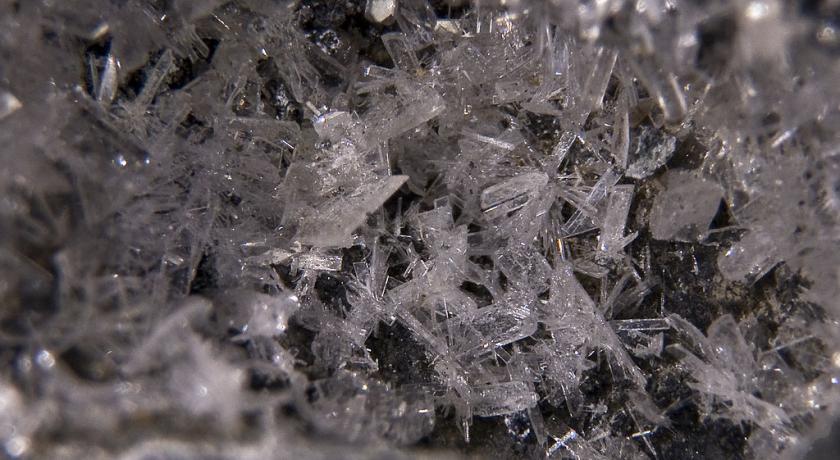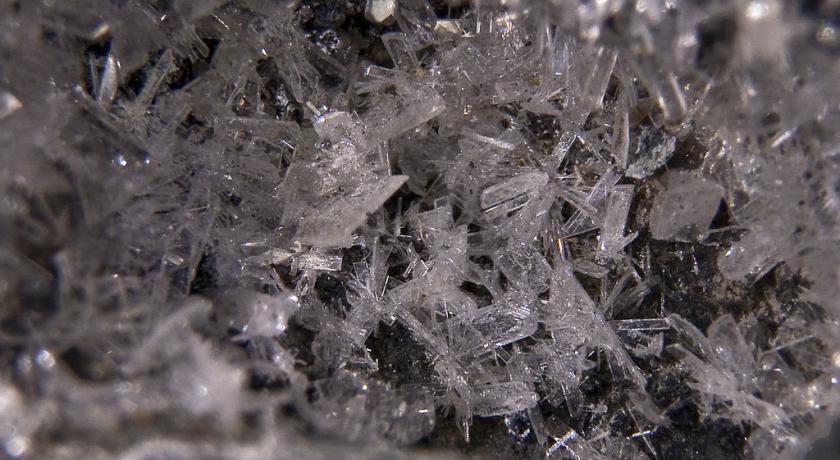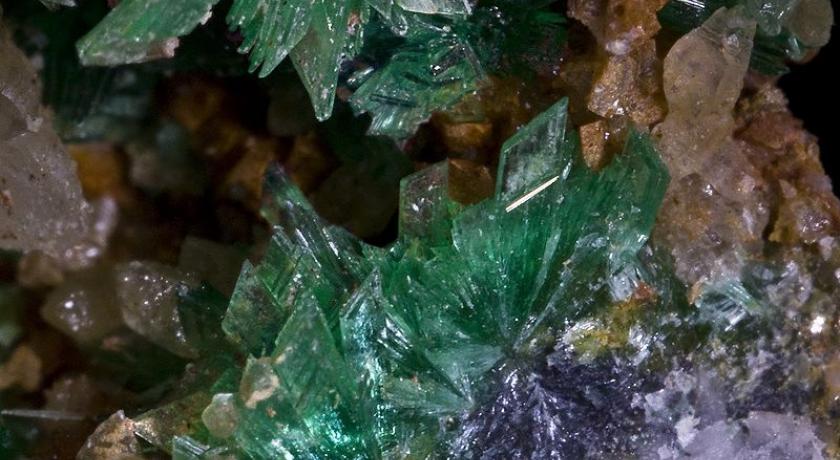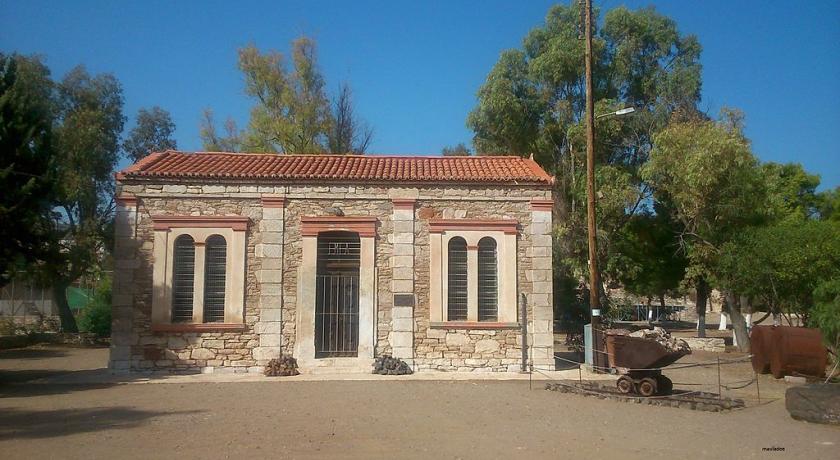Description
Mineralogical Museum of Lavrion is a museum in Lavrion, Attica, Greece.37°42′58″N 24°03′04″E)
A brief history of the Museum
The Mineralogical Museum of Lavrion was inaugurated in 1986 through the efforts of the “Society for Lavrion region Studies” (the Scientific Society of Lavrion, in Greek “Etaireia Meleton Lavreotikis”, E.ME.L.), a non-profit cultural association founded in 1984 and recognized by the Ministry of Culture with the status of a private legal association (Government Gazette No. B/1401/22.10.2001, No. 54), grouping the scientific community of the city and its surroundings. The Museum’s premises occupy a small industrial building, built in 1875, which constituted initially a part of the industrial ore washing complex of the “Metallurgical Company of Lavrion” (“Société des Usines du Laurium” or “Hellenic Company”, 1873-1927).
The Museum has been dedicated to the memory of Andreas Cordellas, Greek mineralogist (1836-1909), whose scientific work paved the way to the re-exploitation, in the second half of the 19th century, of the ancient mines of Lavrion. His monument, created by the sculptor Irini Chariati (1918-2009), member of E.ME.L., was placed by E.ME.L. at the premises of the Museum and unveiled on May 20, 1990.
Compiling the Collection
E.ME.L. commenced in 1984 the effort to compile its mineralogical collection by addressing requests to local families, who, to their knowledge, had in their possession minerals from the region. The response of the inhabitants was massive and truly touching, as in a rather short period of time, an impressive number of exhibits was gathered, allowing thus the collection to be organized and presented. All collectors usually establish warm ties with the objects they gather, both as a whole but also individually with every piece they cherish, thus making their offerings all the more valuable, as they bequeath a beloved object.
Ever since this first effort, numerous inhabitants of the region continued to support the Museum, offering both minerals and other objects (official donors number today more than 150). On the other hand, E.ME.L has allocated the major part of its membership’s fees, together with financial contributions of friends, to the enrichment of its collection, purchasing from various collectors and thus, retaining in the country invaluable material, which would had, otherwise, be sent abroad. A donor’s list placed in the building of the Museum, is a small recognition of their participation and support in its creation.
Selfless endeavors of the members of E.ME.L, during the 32 years since its creation, together with the efforts of the citizens and friends of the city of Lavrion, have resulted in the continued enrichment of the contents of the Mineralogical Museum of Lavrion, thus contriving to the compilation of a collection unique worldwide, by its size and the quality of its contents. Furthermore, the fact that since its opening, the Museum has received more than 350 thousand visitors of all ages, constitute, together with its uniqueness, valuable cultural and economical assets with which E.ME.L. has endowed the city and which could have never existed otherwise.
In the last years, under our encouragement and counsel, the Municipality of Lavrion acquired two very important collections, which have come to enrich the contents of the Museum of E.ME.L. Also, Mr. Ath. Martinos has largely contributed to this end, being acclaimed by the Board of our Society, in recognition of his commitment, great donor and honorary Member of the Society. Finally, through monetary contributions and personal purchases of mineralogical collections, citizens and friends have incessantly helped to complete the contents of the Museum. At this end, the acquisition and transfer to new premises, which will allow the presentation of the collection of the Museum under appropriate museological conditions, constitutes a common target, both for E.ME.L. and the Municipality of Lavrion.
The Collection
The collection of the Mineralogical Museum of Lavrion comprises samples of minerals from the region of Lavrion, pieces unique both in quality and beauty. More than 610 species of minerals have been discovered in the subsoil of the region (amounting to 16% of the world’s known minerals), which is why the region of Lavrion has been rightly named “an inexhaustible natural mineral and chemical laboratory”.
In the reduced premises of the Museum, 740 mineral samples of unique beauty (representing 220 mineral species) are presented in showcases, classified either according to their chemical composition, e.g. sulphates, sulfides, oxides, silicates et al. (following the J. Dana system), or in cabinets comprising general samples or collections of major donors. The collection of the Museum, including more than 3,200 samples, continuously grows. The polymorphy, the particular crystallization, the iridescence and the amazing colours of the minerals surprise the visitors upon arrival. Aragonites, azurites, smithsonites from Lavrion are classified among the most beautiful of the world, whilst major Museums abroad would be proud to behold among their exhibits, samples of annabergite, spangolite, takovite, ktenasite, kapellasite, glaucocerinite, a.o., such as presented here.
The collection of the Museum also comprises ancient and modern miners’ tools, together with lead “turtles” – produced for commercialization – their moulds and other products derived from the smelting process. The visitor can also admire silver coins of ancient Athens (5th-4th c. b.C.) known as the “Lavrion owls”, according to Aristophanes. Huge rocks of slag, used as blocks in the port of the city, are on display in the surrounding grounds, together with loading barrels for vessels affected to the transportation of metals or coal, as well as a wagonette on rails recovered from a semi-destroyed mining gallery (Adami) in the nearby region of Plaka.
Museum Objectives
To favour education through contact with nature The uniqueness, the number/amount, the shapes and colours, the crystallization of the minerals, present an excellent unity. Taking into consideration the exhibits as a whole, it can be asserted that, besides the natural minerals, extendedly exploited in the past and withholding a historical value (argental lead, galena, cerussite, zinc minerals, sphalerite, smithsonite, and the iron-manganese mines), the visitor can discover other minerals, unique worldwide, such as nealite, thorikosite, fiedlerite, georgiadesite, commonly called slag minerals (also known as “the minerals of the scoriæ”, microcrystals called so because of their creation by or under the sea surface).
To promote aesthetical cultivation The minerals, through the brilliance of their beauty constitute a most particular rainbow, sculptures that Nature itself has created. The visitor will admire minerals that have been discovered for the first time in Lavrion (such as laurionite, paralaurionite, serpierite, ktenasite, mammothite) and other types of enormous scientific value and unparallelled beauty.
To constitute a unique means for discovering history The ore, rich in silver and lead, extracted since the 3rd millennium b.C. has determined the fate of the city until our days. In the Classical period (5th-4th c. b.C.), the silver from Lavrion helped preserve for all ages, the Cultural legacy and the Defense of the Athenian Democracy. In our recent history, Lavrion was once again the industrial and metallurgical center of Greece, through its multifaceted economic, technological, social and cultural development.
Source: https://en.wikipedia.org/wiki/Mineralogical_Museum_of_Lavrion
Address
Lavrion
Greece
Lat: 37.716316223 - Lng: 24.051151276







